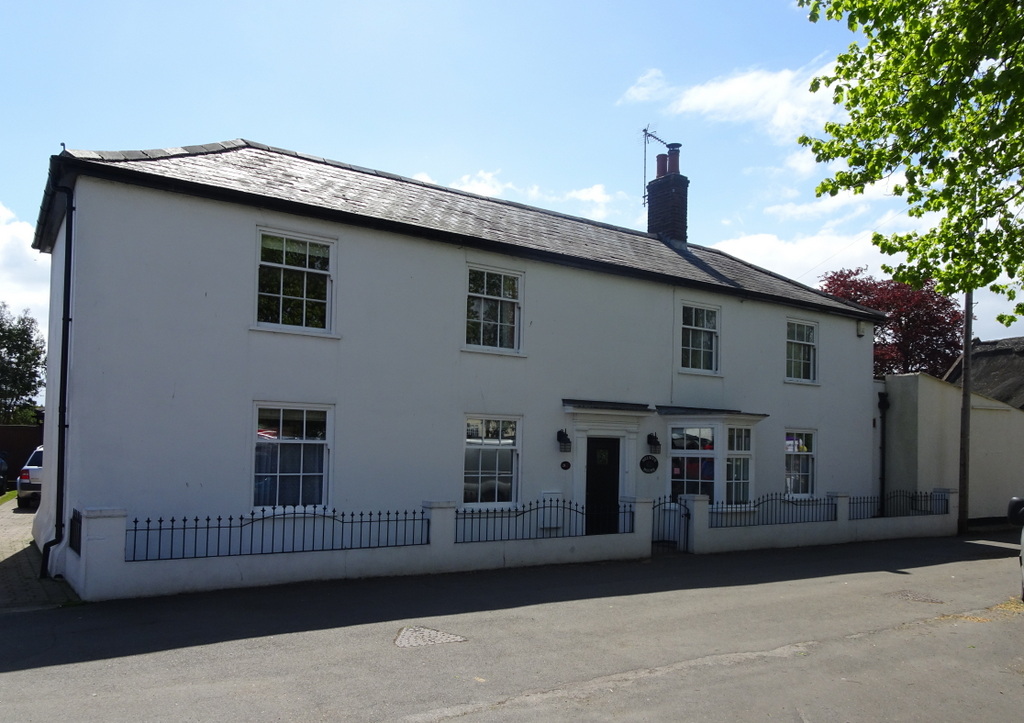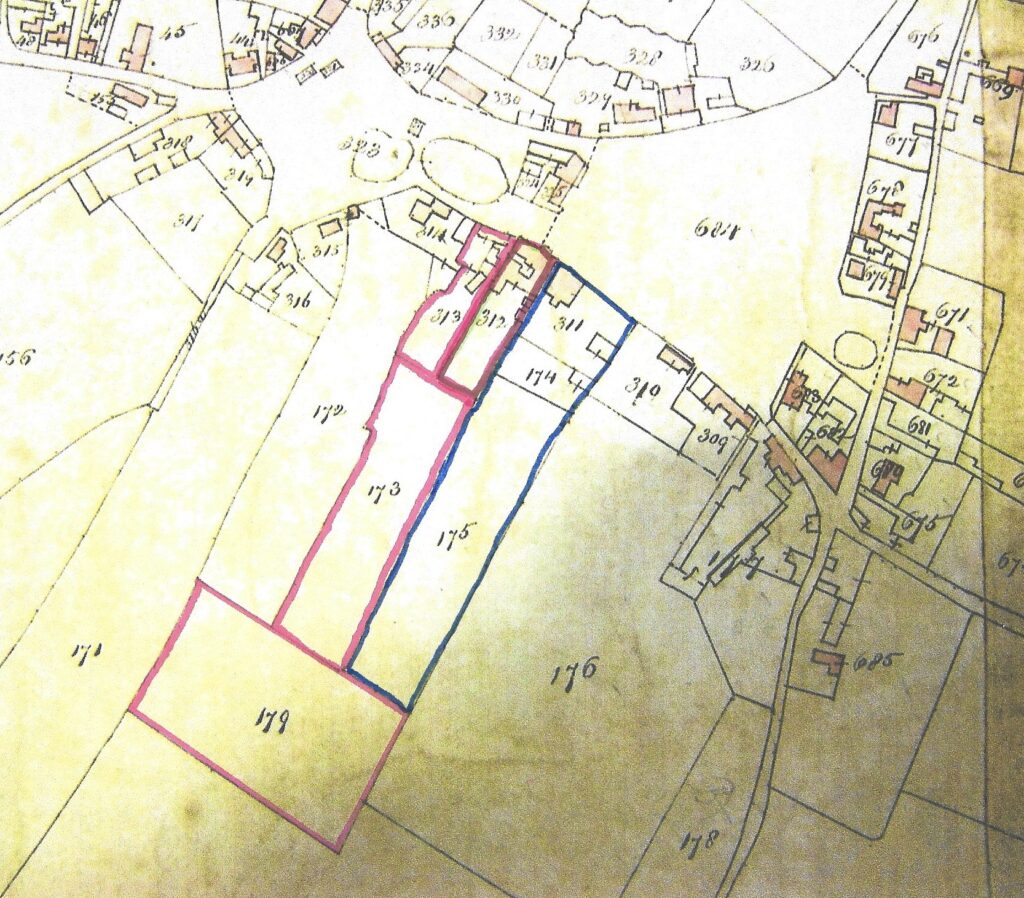Selwyn House, 28 The Green, Martham
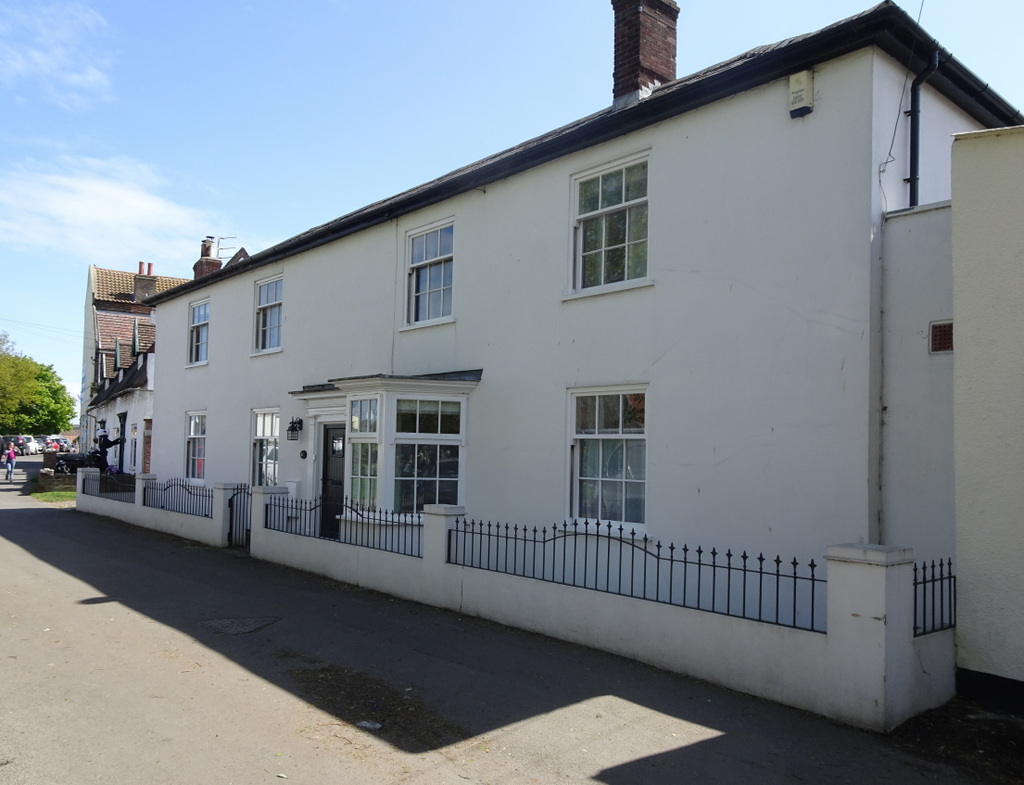
The property we know of as Selwyn House graces the south side of the Village Green a stones throw from the main pond but has only been called by that name in relatively recent times. For the sake of identity, I will call it that throughout this page. It is certainly one of the oldest cottages in the village, probably dating to the 17th century. The location map below may help.
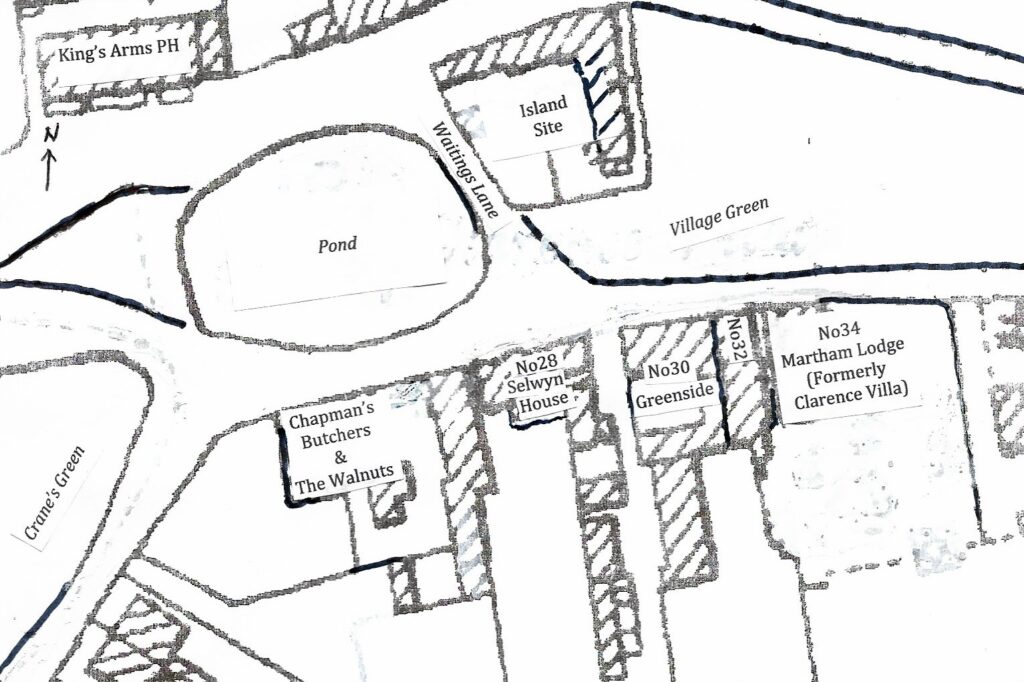
The earliest map we have of Martham is Faden’s map of 1797 and it is tempting to say that one of the tiny black blocks that indicate dwellings opposite the pond are the house but we cannot be certain.
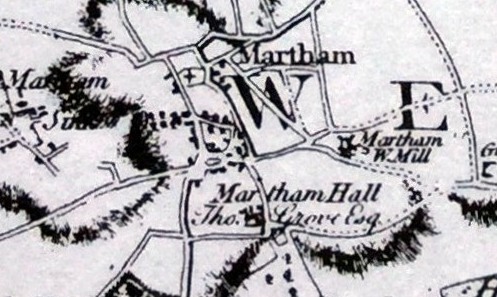
What we do know is that by 1812 William John Garnham (1761-1829), who married Susanna Ivory (1761-1797), owned the land that Selwyn House stands on today. Below is a copy of the 1812 Martham Inclosure Award map with the plots outlined in pink and green. William was the owner of nine acres and one rod of land that included three houses with outbuildings and gardens which he held freehold or copyhold from Martham Manor. William occupied one house whilst another was occupied by T Lusher Jnr. and the third had un-named tenants.
The area shown in green includes the three houses, the one on the left is the original Selwyn House, the middle one is what we now know as Greenside and the one on the right was the predecessor of what is now Martham Lodge Residential Care Home and has been known in the past as Clarence Villa.
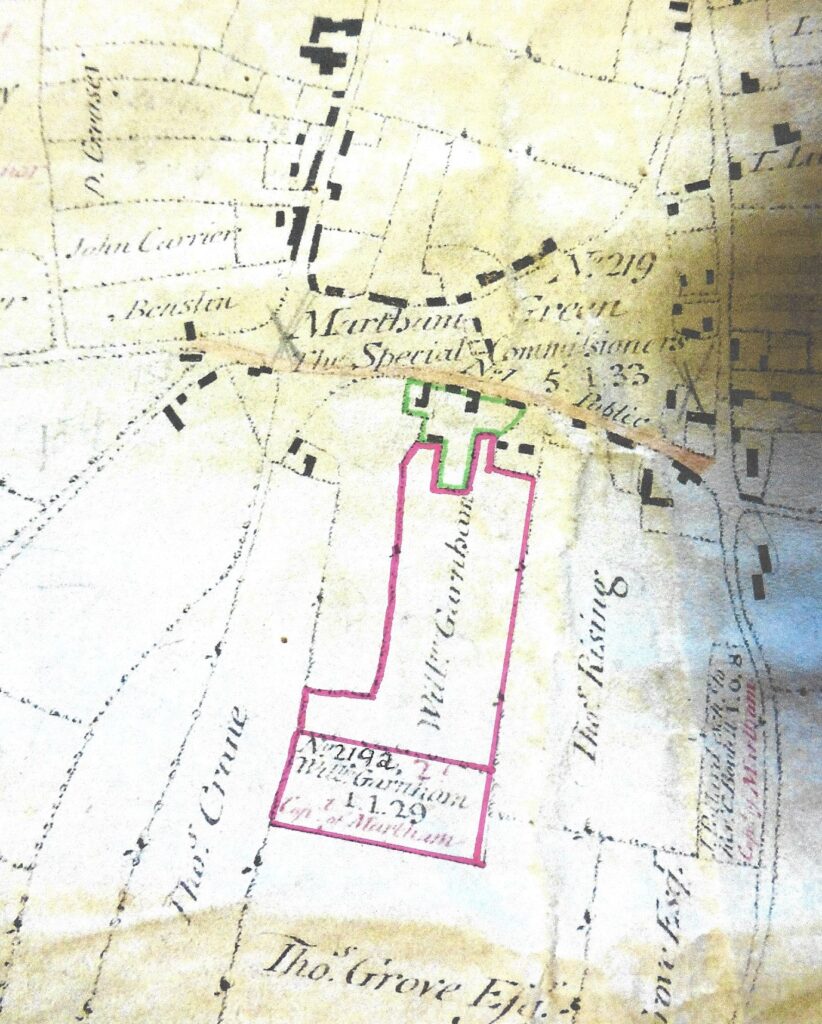
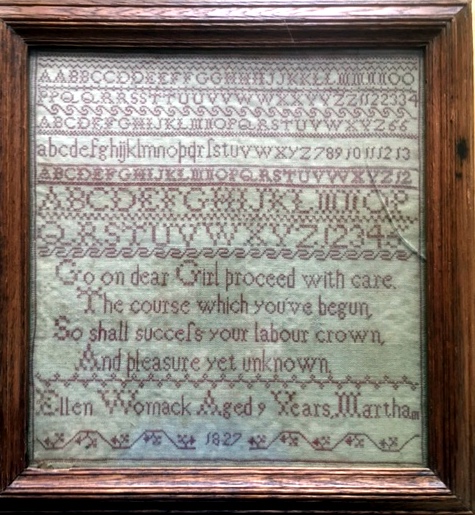
The present owner of Selwyn House has a lovely sampler that has been handed down by successive owners. It was made by Ellen Womack in 1826 when she was nine and lived at one of the cottages that made up the house at the time. In 1826 she lived there with her parents William & Matilda, nee Knights. It seems they were probably the un-named tenants mentioned above.
William Garnham was a successful grocer and his shop was across the Green at the south end of White Street and many years later it become better known as Pyman’s Stores. William died on 11th May 1829 at Heigham Hamlet, Norwich but was returned to Martham and buried on 15th May 1829 at St Mary’s in section F, plot C2. He left the land he owned in 1812 to his sons John and Robert who were listed as owners in the 1842 Tithe Award. A copy of the 1842 Tithe Award map is shown below.
John Garnham (1798-1872) inherited plots 174, 175 & 311 outlined in blue whilst his brother Robert was left plots 312, 313, 173 & 179 shown in red. Selwyn House was on plot 313 owned, and no doubt occupied, by Robert (1790-1863).
Robert Garnham (1790-1863) and Hannah Garnham (1787-1857)
Robert was born in 1790 at Martham and was baptised at St Mary’s on 23rd December that year. He grew up working with his father in the family grocer’s store and when he was 32, he married his cousin Hannah Garnham on 19th October 1822 at Norwich. They had two children at Martham who were William, born in about 1826 and Ann who was born in about 1832. According to the census in 1841 Robert & Hannah were living at The Green which was no doubt at Selwyn House although it was not called that at the time.
In November 1841 Robert sold the family grocer’s to William & James Linford. Despite selling the business local directories and census returns confirm that he did not move home and stayed living at The Green where he became a seed merchant and farmer. Hannah died in 1857 and was buried at St Mary’s on 6th August but her exact burial plot is unknown. Robert continued to live at Selwyn House until he died in 1863.
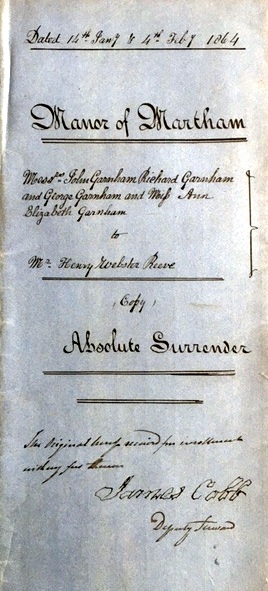
Land Registry records show that in January/February 1864 deeds relating to Selwyn House record that John, Richard and George Garnham had surrendered the property and associated land ownership which had passed into the hands of Henry Webster Reeve. The property was copyhold of the Manor of Martham and, as was the practice at that time, the transaction was recorded in the Martham Manor Rolls and signed by James Cobb the steward of the Manor.
Henry Webster Reeve was a watchmaker and the second husband of Charlotte Holmes of Martham. They had married at St Mary the Virgin on 30th July 1856. Henry died at Martham on 23rd November 1865 and Charlotte inherited the house and continued to live there.
Historic documents held by the present owner of Selwyn House show that Charlotte borrowed £200 from a John Baker in June 1869 and used Selwyn House and other properties she owned in Rollesby as security for the loan. On 28th August 1870 Charlotte married for a third time, this time to James Kettle a retired lighthouse keeper from Winterton and the documents showing the chain of property title record that he became the owner when they married. Charlotte and James still lived there at the time of the 1871 census but by 1881 they had left Martham and moved to Lowestoft where James died in 1885 and Charlotte in 1887. Once they had left there follows a period of uncertainty about who owned or occupied the cottages, remembering that they were probably still made up of two or three separate dwellings.
The walking order of the 1881 census indicates that Richard Rogers lived at the house with his then wife Anna, nee Watson and part of it was used as “refreshment rooms”. Richard had previously been the landlord of the King’s Arms pub from 1864 to 1877 but had given up the pub licence and may have moved across the road to Selwyn House from as early as 1877. Richard and Anna were listed as living at ‘The Refreshment Rooms’, The Green, Martham in 1891. Richard died in May 1901 by which time Anna had moved to Damgate.
There is another entry in deeds associated with the house that indicate that a Miss C Layton was the owner in 1897 but nothing more is known about her.
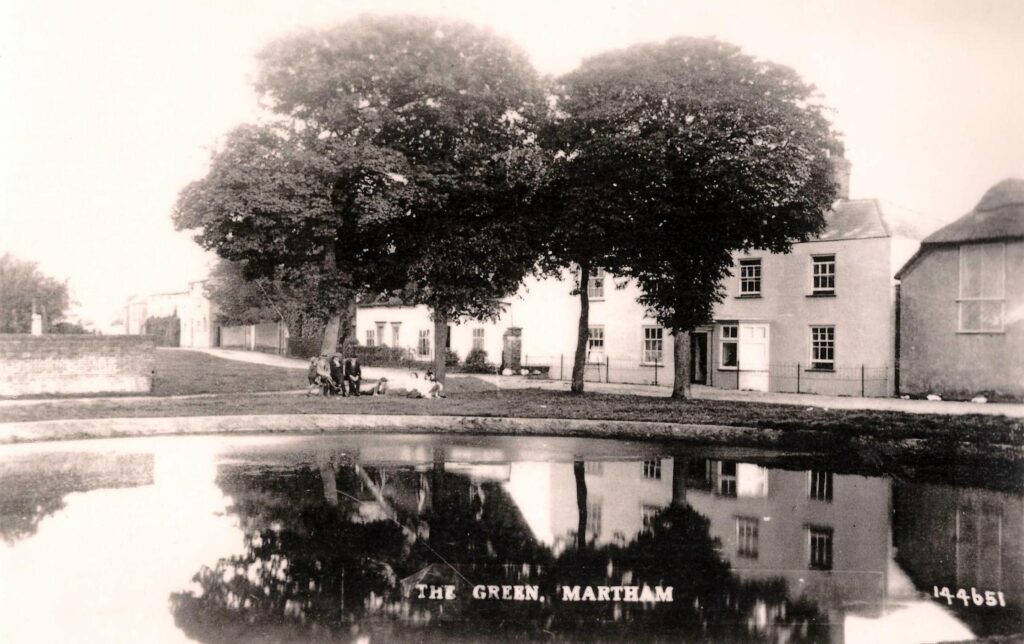
The above photograph was taken in about 1908 soon after the pond had its concrete surround provided. You can see that Selwyn House has two front doors clearly indicating that it was once more than one cottage. Some local historians claim that even earlier it was four cottages.
William Kirkland (1848-1937) was married to Lydia, nee Brown and by 1901 they were the new occupiers of Selwyn House which they probably rented. They had eleven children who were all born in Martham. Four were born after they moved into Selwyn House and the others were born at their previous home at No1 Stone Houses, Black Street. Sadly, Lydia died in 1910 and she was buried at St Mary the Virgin. William was a draper and it seems that he was trading until at least 1921 when Kelly’s Directory listed him as being a draper at The Green, Martham. One of William & Lydia’s sons was called Robert (1899-1975) who joined his father in the business and took it over when his father died in 1937. By this time Robert and his wife Madeline were living at the Old School House and their drapers store was at the building we now know as Whittaker Carpets on White Street.
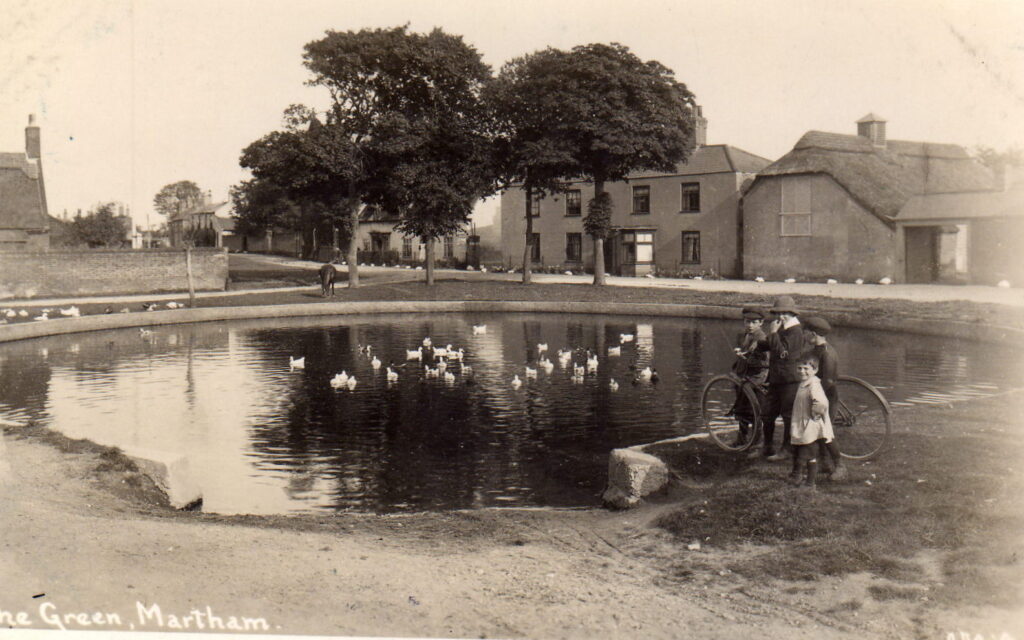
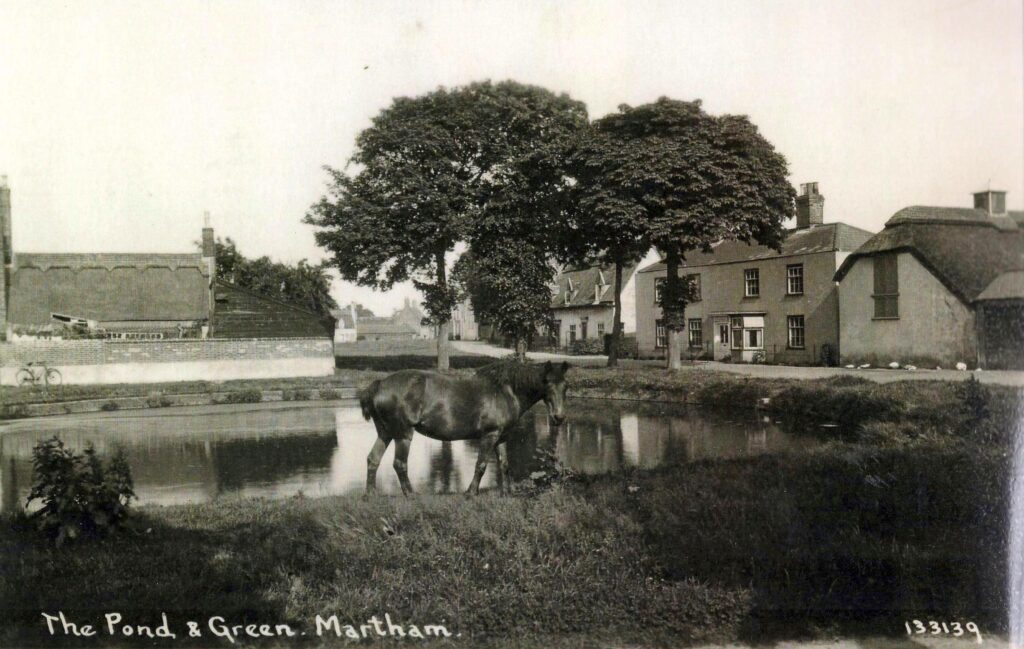
The above two photos attributed to 1915 and 1940 show that the former doorway on the right had been converted into a bay window. This was probably done by the time William Kirkland lived there as he used it to display clothes he sold at his White Street drapers.
Edmund George Chapman and his wife Constance, nee Hurren, were living at Selwyn House between, at the very least, 1931 and 1934 when that address was listed on the baptism records of three of their children. Edmund (Ted) was a second-generation butcher working with his father George (1869-1936) at their long-established shop next door. The Chapmans may have lived at Selwyn House up until 1936 after which they lived at The Walnuts at the back of the Chapman’s Butchers. In 1937 the deeds indicate that the Executors of George Chapman sold the house to a Mr B J Linford but nothing more is known about him.
In September 1939 Richard & Annie Knights lived at Selwyn House with their three children. Richard was a Missionary with the London City Mission which at the time owned Clarence Villa a few doors along on The Green. Clarence Villa was used for holidays for missionaries working in difficult and deprived areas of London and for convalescence after illness. In 1939 Clarence Villa was a busy, popular sanctuary and it is likely that Richard & Annie Knights were only staying at Selwyn House for a short while of respite whilst Clarence Villa was full.
There is a conveyance dated 28th May 1952 showing that Mrs Cicely Madge Cross, nee Dyball, must have owned the house at one time because she sold it to Mr & Mrs W Thomas and they in turn sold it to Mr & Mrs G Lee. The property changed hands again in 1985 when Mr & Mrs Lucas purchased it.
Selwyn House and its neighbouring cottages at Nos.30 & 32 The Green have been associated in more recent times with members of the Dyball family and I am indebted to Nigel Dyball for the information he has shared to help produce this page.
